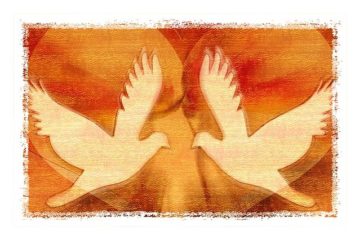 In our lives, in our commitments, in our work… we sometimes come into contact with people who are wounded, frozen by the gaze of others who judge them and reduce them to their faults. In the image of Christ, it is important to put ourselves on the level of the person we are accompanying in their wounds, their misfortune or their distress..
In our lives, in our commitments, in our work… we sometimes come into contact with people who are wounded, frozen by the gaze of others who judge them and reduce them to their faults. In the image of Christ, it is important to put ourselves on the level of the person we are accompanying in their wounds, their misfortune or their distress..
We see how complicated it is to get back on the path of life. It is a work of resurrection that takes time… even with the help of God or Christ For all those who listen to or accompany people in difficulty today for all those who listen to or accompany people in difficulty today: are we not at risk, in spite of ourselves, of using a moralising and condescending discourse without, first of all, without first proclaiming the love of Christ for every person. This is what happens, pope Francis tells us “when we speak more of law than of grace, more of the Church than of Jesus Christ, more of the Pope than of the word of God Joy of the Gospel n°38.
The Word of God is always rich in teaching. I propose to you the story of the “adulterous woman” in John 8:1-11 This sinful woman, condemned by the “fundamentalists” of the time, is lifted up by Jesus, forgiven, freed from her accusers… with this formula that has remained famous: “Let the one who has never sinned cast the first stone! This woman is on her feet and on her way. She can set out on her journey by accepting her imperfection and doing all she can for the Lord.
“Jesus had gone to the Mount of Olives; early in the morning he returned to the Temple. As all the people came to him, he sat down and began to teach. The scribes and Pharisees brought to him a woman who had been caught committing adultery. They brought her forward and said to Jesus, “Teacher, this woman was caught in the act of adultery. Moses commanded us in the Law to stone such women. And what do you say? They spoke this way to test him, so that they could accuse him. But Jesus stooped down and drew lines on the ground with his finger. When they persisted in questioning him, he straightened up and said to them, “He who is without sin among you, let him be the first to throw a stone at her And he stooped down again to draw lines on the ground. And when they heard this answer, they went away one by one, beginning with the older ones. Jesus was left alone with the woman in front of him. He stood up and asked her, “Woman, where are they? Has no one condemned you? She answered, “No one, Lord Jesus said to her, “Neither do I condemn you. Go and sin no more
Jesus’ answer was clever, skilful, inventive, he managed to unravel the situation without having to make great speeches… The message is immediately understood : as we are all sinners, we do not have to judge and even less to condemn others.
Christ rises up, and raises her up with him, and speaks to her, telling her of his unconditional forgiveness. Then he says to her: “Go and sin no more”, but this is not a condition, it is a sending after having forgiven and raised her. “Raising” and “Resurrecting”: life again after the sin.
Deepening
- Do we feel resurrected each time we are forgiven, raised up so that, after forgiveness, we can approach our lives differently?
- Do we live in the joy of forgiveness, or do we live with the anxiety that the fault, even when forgiven, still weighs on us?



